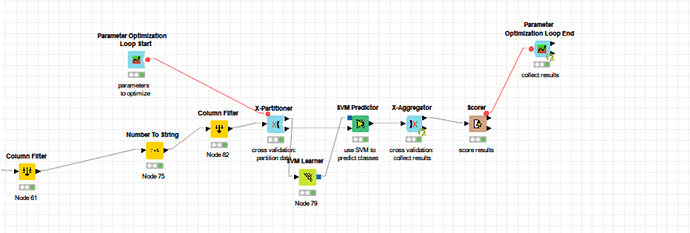Dear KNIME Cummunity,
I have previously used a RNN to model the following problem and can easily get above a 98% accuracy.
- Water runs into a cylinder at a constant rate
- Choose 10000 random sized cylinders: (variables r, l and t)random radius, length and duration (say seconds of constant rate (flow))
- I added another feature (vector sequence) of the progression of the volume in the cylinder over time
- My RNN could predict with high accuracy which cylinders would be full and which not after the random time t (in seconds)
Now I want to use a SVM to do the same job:
- Firstly, I did not use a sequence vector as input as in the case for the RNN; I did this because I don’t think SVM supports that kind of input
- For that reason, I kept the whole sequence as individual feature (variable)
- You can find my workflow in the public domain or attached KNIME_predict cylinder(9) SVM.knwf (2.5 MB)
knime://My-KNIME-Hub/Users/knimeoutjie/Public/Cylinders/KNIME_predict%20cylinder(9)%20SVM
When I implement the SVM as shown below, the hyperplane in the gutter is on one of the axis, which clearly means that:
- Either there is no solution or
- I am not implementing it correctly
Would appreciate any help and comments.
Many thanks,
Leon
